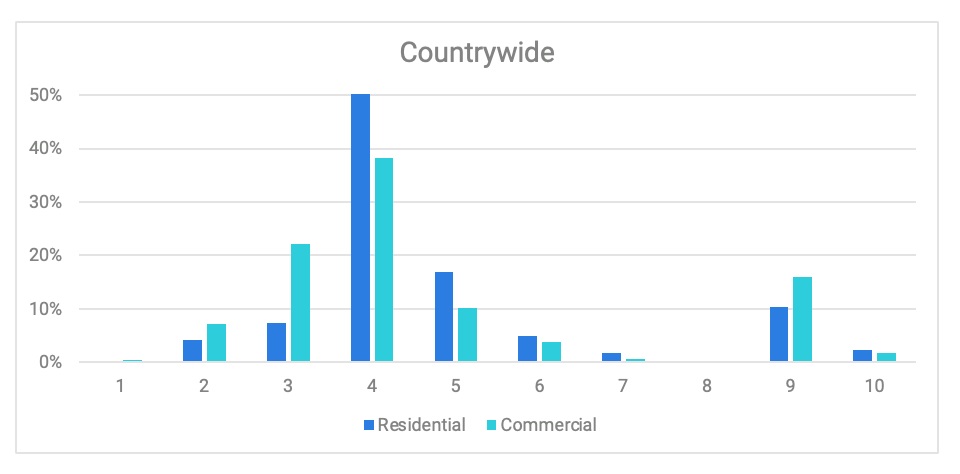Not only does the Insurance Services Office (ISO) rate fire departments, it also rates building code effectiveness. The Building Code Effectiveness Grading Schedule (BCEGS) assesses community building codes and their enforcement, with special emphasis on mitigation of losses from hurricanes, tornados, earthquakes, and other natural hazards.
Areas with well-enforced, up-to-date codes have a better loss experience, which can be reflected in lower insurance rates. Lessening catastrophe-related damage and ultimately lowering insurance costs provides an incentive for local and state governments to enforce their building codes rigorously — especially as they relate to windstorm and earthquake damage.
Just like the ISO fire protection class, the BCEGS rating is based on a scale of 1 to 10, with 1 being the best and 10 being the worst. ISO develops advisory rating credits that apply to ranges of BCEGS classifications (1-3, 4-7, 8-9, 10). So a community that is in the 1-3 zone would receive the best rate credit, while on in the 8-9 would be charged more for insurance. A community that refuses to participate would fall into the same category as a eight or a nine (called a nine eight, and written as 98).
The BCEGS program assesses a community’s building code enforcement in three areas:
- Code administration
- Plan review
- Field inspection
The classification uses 1,243 data points to calculate two scores: One for one- and two-family residential construction, and another for commercial or industrial construction. The scores are assigned a scaled class rating of 1 (exemplary commitment to building code enforcement) to 10. The classifications apply to communities under the jurisdiction of each building code department. Here is the nationwide breakdown of BCEGS ratings:

The ratings vary by state. In Florida, the lowest BCEGS rating is in the Florida Keys, which has a 5 rating. The rest of the state is 4 or higher. Most of the coastal counties are a 1 or a 2. In Tennessee, more than half of the state is rated a 6 or lower.
The states with the lowest ratings are Kansas, South Dakota, and New Mexico, which are all an 8 for residential buildings. The highest rating for residential is California as a 3. Florida averages to a 4.

The BCEGS is an important datapoint used by insurance companies in determining the risk they face when insuring property against natural hazards.
6 Comments
Grumpy51 · October 2, 2024 at 8:57 am
I knew about ISO rating (old FF) but not about BCEGS.
While many berate government, the above organizations show the benefit of government or quasi-governmental services.
Rick T · October 2, 2024 at 10:22 am
The web site will show rating breakdowns for each state but it appears the site will only provide more detailed ratings to county officials. I guess a FOIA request is in my future.
IcyReaper · October 2, 2024 at 11:36 am
How are you getting the info. I tried going to the sites to ck out my area and maybe a future move area and it says its restricted to insurance and other authorize agencies?
Dan D. · October 2, 2024 at 3:34 pm
Yawn. I demand my $free.99 back on this post.
Dan D. · October 2, 2024 at 8:42 pm
Just to be clear, that was lame sarcasm. I’m Jello-brained from ACEP.
Regale us with more tales from the ED wherein you resuscitate people! It encourages us (well, some of us) to work harder to train so we can step up and step in when opportunity is at our feet.
Divemedic · October 3, 2024 at 6:40 am
This discussion has been brought to you by those who think that you pay taxes for life, but are only permitted one lifetime disaster before being cut off.
Comments are closed.